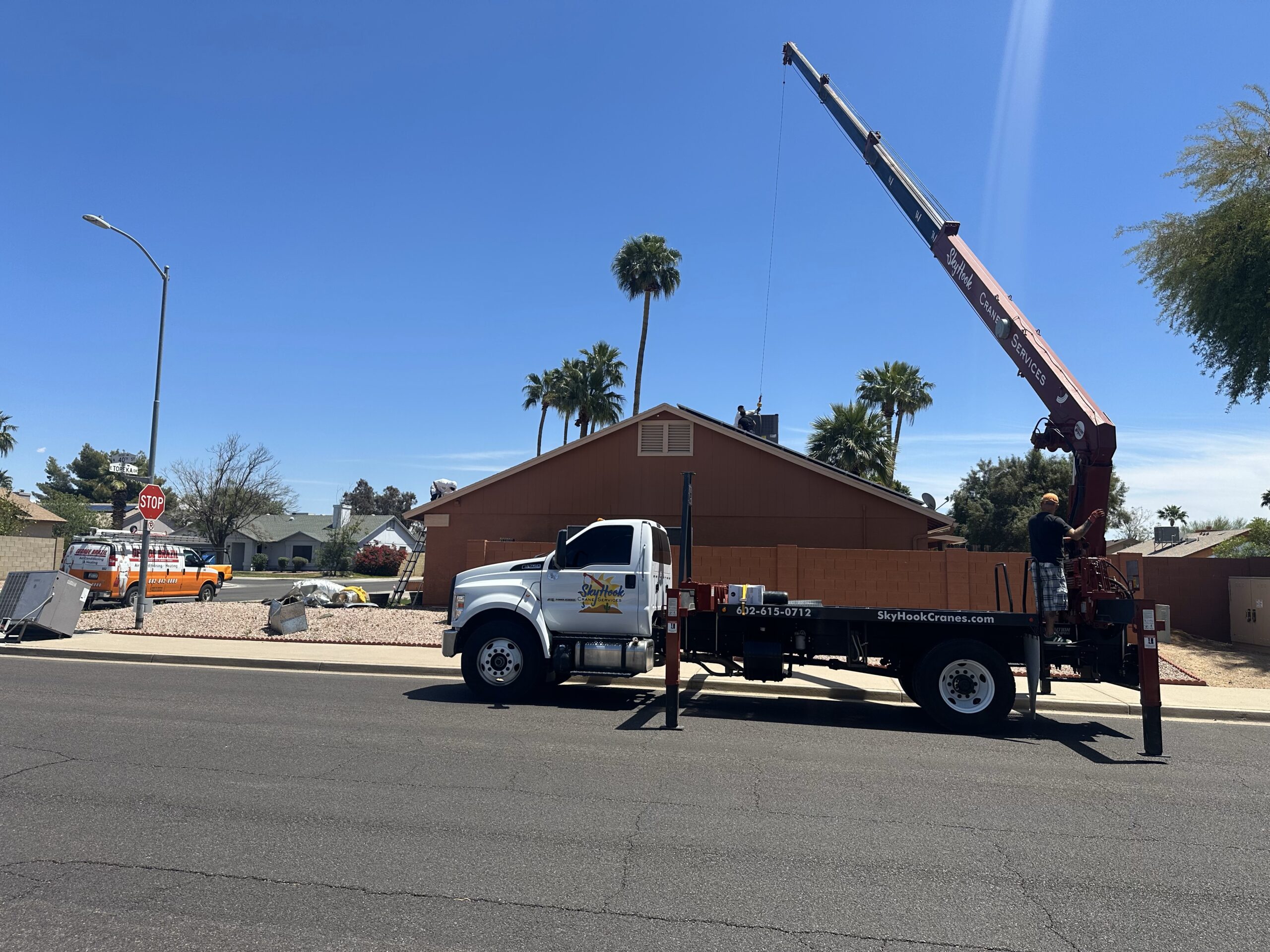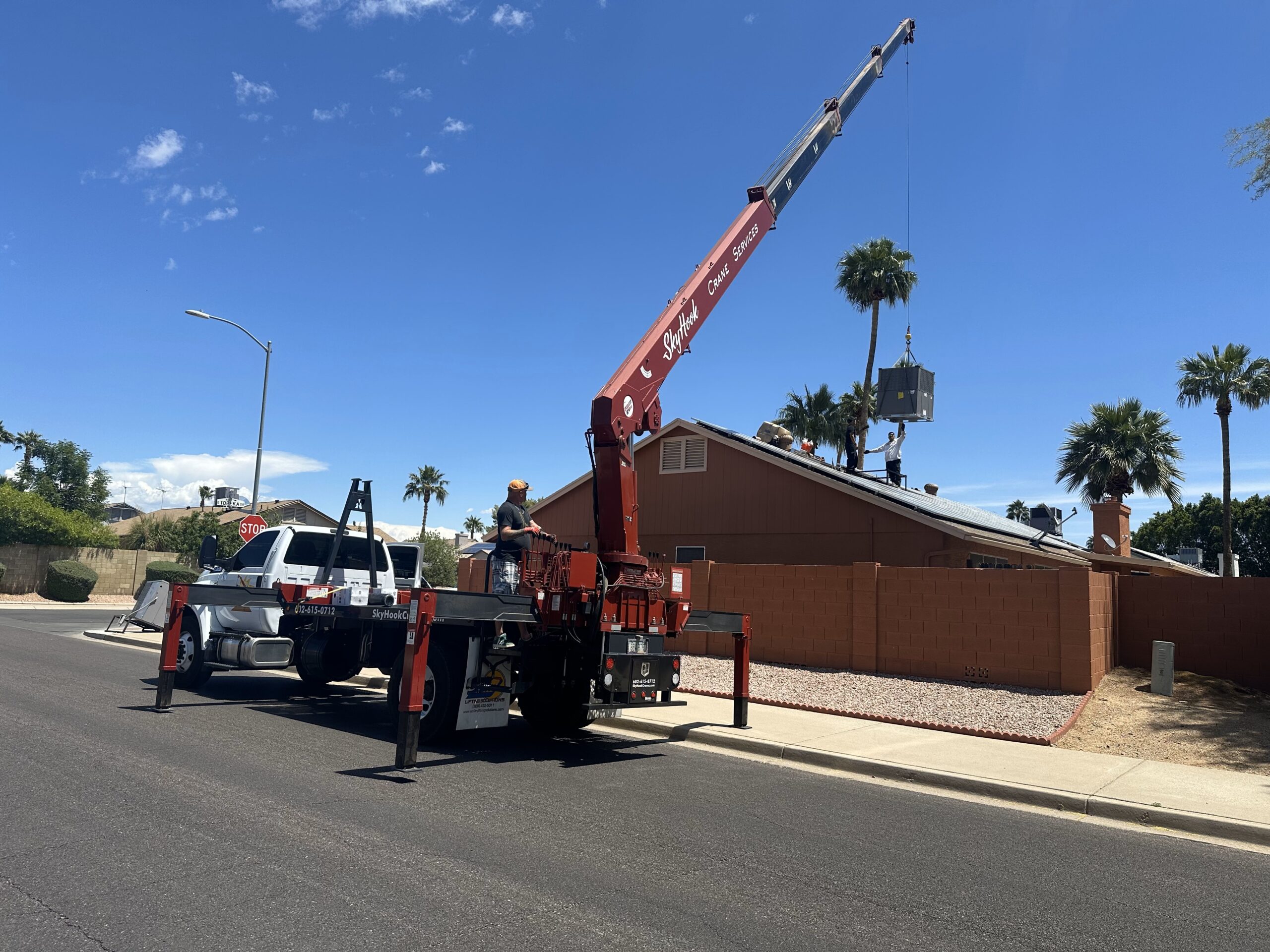5 Essential Residential Crane Lifting Tips
When using a crane for a residential project, safety and precision are key. Whether you’re lifting HVAC units, large beams, or hot tubs, following the right steps can make all the difference. Here are five practical tips to ensure your crane lift goes smoothly:
1. Plan Ahead and Get Permits
Before the crane ever arrives, make sure you’ve mapped out the lift. Know where the crane will be positioned, how heavy the load is, and the lift path. In many neighborhoods, permits are required—especially if the crane will block a road or access public property. Check with your local municipality and HOA to avoid delays.
2. Choose the Right Crane for the Job
Not all cranes are created equal. Residential spaces often have tight access and height limitations. Make sure you’re using a crane that fits the space and meets the weight and reach requirements of the job. A company like Skyhook Cranes, which specializes in residential lifts, can help you select the right equipment.
3. Clear the Area
Make sure the lift zone is free of obstacles—cars, furniture, tree branches, or power lines. Keep all people and pets out of the working area for the duration of the lift. The fewer distractions or hazards, the safer and more efficient the job will be.
4. Communicate With Your Team
Good communication between the crane operator, ground crew, and homeowner is essential. Use hand signals, two-way radios, or direct lines of sight to ensure everyone is on the same page during the lift. Miscommunication can lead to damage or injury.
5. Trust Professional Operators
Always hire licensed, experienced crane operators—especially for residential jobs where space and safety are crucial. Companies like Skyhook Cranes employ certified professionals who understand the specific challenges of residential work and know how to navigate them safely.
These tips will help you get the most out of your crane lift while protecting your property and everyone involved.






